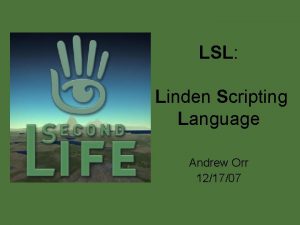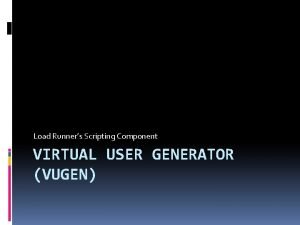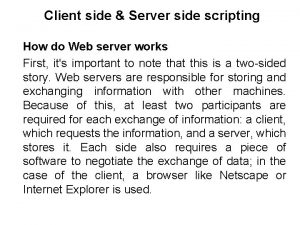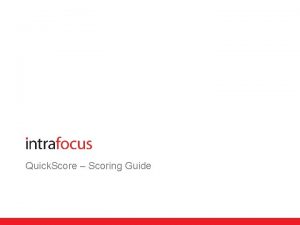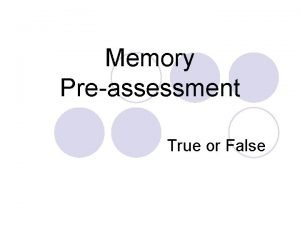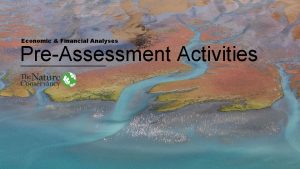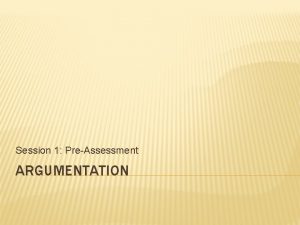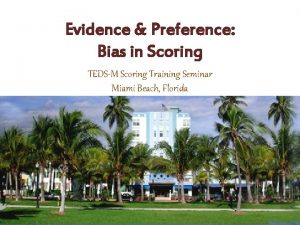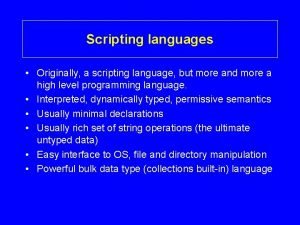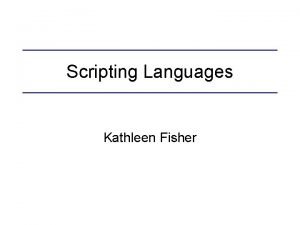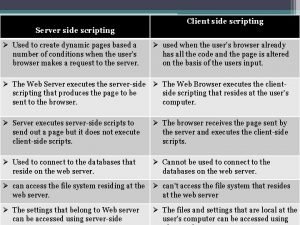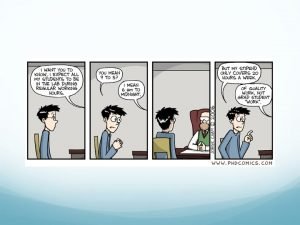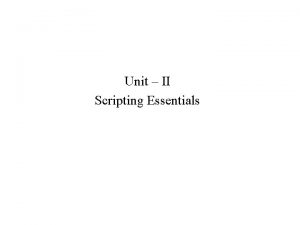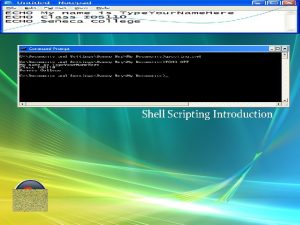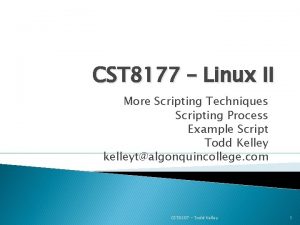PreAssessment Scripting a Lesson Scoring a Lesson Evidence

















- Slides: 17

Pre-Assessment Scripting a Lesson Scoring a Lesson Evidence

TAP: A New Direction for Success

Graffiti Walls You will be divided individually or pairs to answer the questions on the wall. You will rotate( to the right) from one question to the next until activity is completed. Questions 1. Rate your overall performance of scripting lesson, scoring lesson and providing evidence of the indicators. Fist (0) to Five. Explain why. 2. Why do you think it’s important to be able to score a lesson and be able to provide evidence for indicators? 3. How has scripting a lesson, scoring a lesson and providing evidence for indicators informed your own instructional practices?

TAP: A New Direction for Success

Identify Need TTWBAT explain the TAP Rubrics TTWBAT make connections from a lesson to the rubrics and from the rubrics to the lesson.

New Learning On-Going Professional Development and Growth In TAP, the teacher rubric is used in two ways: as a summative measure in determining pay for performance as a formative measure which identifies instructional areas where master and mentor teachers can provide support to career teachers to increase student achievement

What does the Research say? Student achievement and teacher learning increases when professional development is teacher-led, ongoing and collaborative. (Desimone, Porter, Garet, Yoon, & Birman, 2002; Smylie, Allensworth, Greenberg, Harris, & Luppescu, 2001). Schools that regularly link teachers to other teachers to form a supportive community are capable of successfully reforming teaching and learning. (Fullan 2001)

Rubrics and Scoring TAP Rubrics Goal for Scoring Each Domain

Instruction esson Structure Presenting Instructional & Pacing Content Motivating Students Standards & Objectives Exemplary (5)* All learning objectives and state content standards are explicitly communicated. Sub-objectives are aligned and logically sequenced to the lesson’s major objective. Learning objectives are: (a) consistently connected to what students have previously learned, (b) know from life experiences, and (c) integrated with other disciplines. Expectations for student performance are clear, demanding, and high. State standards are displayed and referenced throughout the lesson. There is evidence that most students demonstrate mastery of the objective. The teacher consistently organizes the content so that it is personally meaningful and relevant to students. The teacher consistently develops learning experiences where inquiry, curiosity and exploration are valued. The teacher regularly reinforces and rewards effort. Proficient (3)* Most learning objectives and state content standards are communicated. Sub-objectives are mostly aligned to the lesson’s major objective. Learning objectives are connected to what students have previously learned. Expectations for student performance are clear. State standards are displayed. There is evidence that most students demonstrate mastery of the objective. Unsatisfactory (1)* Few learning objectives and state content standards are communicated. Sub-objectives are inconsistently aligned to he lesson’s major objective. Learning objectives are rarely connected to what students have previously learned. Expectations for student performance are vague. State standards are displayed. There is evidence that few students demonstrate mastery of the objective. The teacher sometimes organizes the content so that it is personally meaningful and relevant to students. The teacher sometimes develops learning experiences where inquiry, curiosity and exploration are valued. The teacher sometimes reinforces and rewards effort. Presentation of content always includes: Presentation of content most of the time includes: visuals that establish: the purpose of the lesson, visuals that establish the purpose of the lesson, preview the organization of the lesson, and include preview the organization of the lesson, and internal summaries of the lesson. include internal summaries of the lesson. examples, illustrations, analogies, and labels for new concepts and ideas. modeling by the teacher to demonstrate his or her modeling by the teacher to demonstrate his or performance expectations. her performance expectations. concise communication. logical sequencing and segmenting. all essential information. no irrelevant, confusing, or non-essential information. All lessons start promptly. The lesson's structure is coherent, with a beginning, middle, end, and time for reflection. Pacing is brisk, and provides many opportunities for individual students who progress at different learning rates. Routines for distributing materials are seamless. No instructional time is lost during transitions. Most lessons start promptly. The lesson's structure is coherent, with a beginning, middle, and end. Pacing is appropriate, and sometimes provides opportunities for students who progress at different learning rates. Routines for distributing materials are efficient. Little instructional time is lost during transitions. The teacher rarely organizes the content so that it is personally meaningful and relevant to students. The teacher rarely develops learning experiences where inquiry, curiosity and exploration are valued. The teacher rarely reinforces and rewards effort. Presentation of content rarely includes: visuals that establish the purpose of the lesson, preview the organization of the lesson, and include internal summaries of the lesson. examples, illustrations, analogies, and labels for new concepts and ideas. modeling by the teacher to demonstrate his or her performance expectations. concise communication. logical sequencing and segmenting. all essential information. no irrelevant, confusing, or non-essential information. Lessons are not started promptly. The lesson has a structure, but may be missing closure or introductory elements. Pacing is appropriate for less than half of the students, and rarely provides opportunities for students who progress at different learning rates. Routines for distributing materials are inefficient.

The Parts of the Rubric Domains Instruction Standards and Objectives Exemplary (5)* All learning objectives and state content standards are explicitly communicated. Sub-objectives are aligned and logically sequenced to the lesson’s major objective. Learning objectives are: (a) consistently connected to what students have previously learned, (b) know from life experiences, and (c) integrated with other disciplines. Expectations for student performance are clear, demanding, and high. State standards are displayed and referenced throughout the lesson. There is evidence that most students Proficient (3)* Most learning objectives and state content standards are communicated. Sub-objectives are mostly aligned to the lesson’s major objective. Learning objectives are connected to what students have previously learned. Expectations for student performance are clear. State standards are displayed. There is evidence that most students demonstrate mastery of the objective. Unsatisfactory (1)* Few learning objectives and state content standards are communicated. Sub-objectives are inconsistently aligned to he lesson’s major objective. Learning objectives are rarely connected to what students have previously learned. Expectations for student performance are vague. State standards are displayed. There is evidence that few students demonstrate mastery of the objective.

The Parts of the Rubric Domains Indicators Instruction Standards and Objectives Exemplary (5)* All learning objectives and state content standards are explicitly communicated. Sub-objectives are aligned and logically sequenced to the lesson’s major objective. Learning objectives are: (a) consistently connected to what students have previously learned, (b) know from life experiences, and (c) integrated with other disciplines. Expectations for student performance are clear, demanding, and high. State standards are displayed and referenced throughout the lesson. There is evidence that most students Proficient (3)* Most learning objectives and state content standards are communicated. Sub-objectives are mostly aligned to the lesson’s major objective. Learning objectives are connected to what students have previously learned. Expectations for student performance are clear. State standards are displayed. There is evidence that most students demonstrate mastery of the objective. Unsatisfactory (1)* Few learning objectives and state content standards are communicated. Sub-objectives are inconsistently aligned to he lesson’s major objective. Learning objectives are rarely connected to what students have previously learned. Expectations for student performance are vague. State standards are displayed. There is evidence that few students demonstrate mastery of the objective.

The Parts of the Rubric Descriptors Domains Indicators Instruction Standards and Objectives Exemplary (5)* All learning objectives and state content standards are explicitly communicated. Sub-objectives are aligned and logically sequenced to the lesson’s major objective. Learning objectives are: (a) consistently connected to what students have previously learned, (b) know from life experiences, and (c) integrated with other disciplines. Expectations for student performance are clear, demanding, and high. State standards are displayed and referenced throughout the lesson. There is evidence that most students Proficient (3)* Most learning objectives and state content standards are communicated. Sub-objectives are mostly aligned to the lesson’s major objective. Learning objectives are connected to what students have previously learned. Expectations for student performance are clear. State standards are displayed. There is evidence that most students demonstrate mastery of the objective. Unsatisfactory (1)* Few learning objectives and state content standards are communicated. Sub-objectives are inconsistently aligned to he lesson’s major objective. Learning objectives are rarely connected to what students have previously learned. Expectations for student performance are vague. State standards are displayed. There is evidence that few students demonstrate mastery of the objective.

The Parts of the Rubric Descriptors Domains Indicators Performance Levels Instruction Standards and Objectives Exemplary (5)* All learning objectives and state content standards are explicitly communicated. Sub-objectives are aligned and logically sequenced to the lesson’s major objective. Learning objectives are: (a) consistently connected to what students have previously learned, (b) know from life experiences, and (c) integrated with other disciplines. Expectations for student performance are clear, demanding, and high. State standards are displayed and referenced throughout the lesson. There is evidence that most students Proficient (3)* Most learning objectives and state content standards are communicated. Sub-objectives are mostly aligned to the lesson’s major objective. Learning objectives are connected to what students have previously learned. Expectations for student performance are clear. State standards are displayed. There is evidence that most students demonstrate mastery of the objective. Unsatisfactory (1)* Few learning objectives and state content standards are communicated. Sub-objectives are inconsistently aligned to he lesson’s major objective. Learning objectives are rarely connected to what students have previously learned. Expectations for student performance are vague. State standards are displayed. There is evidence that few students demonstrate mastery of the objective.

Develop New Learning The M/M and Career Teachers will discuss as many indicators as possible; sharing scores and evidence that supports the scores. 1. Standards and Objectives 2. Motivating Students 3. Lesson Structure and Pacing 4. Questioning 5. Academic Feedback 6. Teacher Knowledge of Students

37 c Lesson Evidence Ms. Paul 37 c Lesson Scores and Evidence

Apply New Learning TW video a lesson (one class period). TW score own lesson using Evaluator Template. TW complete an Evidence Template to support the lesson’s score. TW plan a conference with Mrs. Wideman-TBD (to discuss lesson and the lesson’s scores)

Reflection How has watching a lesson, scoring the lesson and providing the supporting evidence helped you make connections back to the rubrics? Please be specific. ~Please initial your sticky note. ~
 Script scoring symbols
Script scoring symbols What is a primary source
What is a primary source Primary evidence vs secondary evidence
Primary evidence vs secondary evidence Secondary sources
Secondary sources Primary evidence vs secondary evidence
Primary evidence vs secondary evidence Primary evidence vs secondary evidence
Primary evidence vs secondary evidence Fiber evidence can have probative value
Fiber evidence can have probative value Class vs individual evidence
Class vs individual evidence How can class evidence narrow a field of suspects
How can class evidence narrow a field of suspects A pair of latex gloves was found at a crime scene
A pair of latex gloves was found at a crime scene Red herring fallacy
Red herring fallacy Inventor scripting
Inventor scripting Introduction to scripting languages
Introduction to scripting languages Lsl programming language
Lsl programming language Loadrunner scripting language
Loadrunner scripting language Lab 10-2: basics of scripting
Lab 10-2: basics of scripting Gelscripting
Gelscripting Advantages and disadvantages of client side scripting
Advantages and disadvantages of client side scripting













